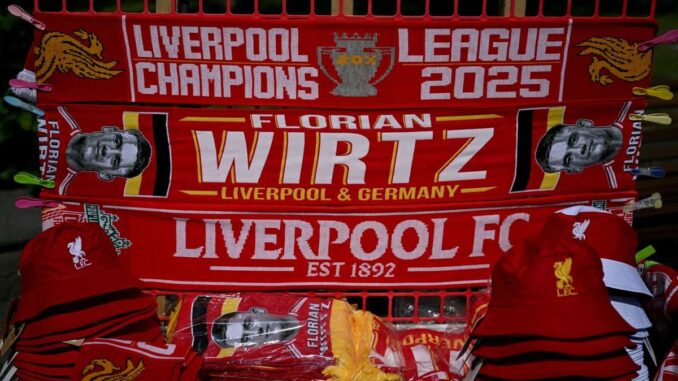
After years of caution on the transfer market, Liverpool makes movements with large money. So what has changed-and how do they stay in the rules?
Liverpool is known for their relatively speaking financial prudence. In recent seasons, they have often swerred the frenzied expenses seen elsewhere in the Premier League – but this summer marks a change in your net.
Reds have embarked on the transfer market with unusual assault. Renowned signatures, significant costs and a renewed ambition have defined the summer so far.
Florian Wirtz, Jeremie Frimpong and Milos Kerkez were acquired for a total of 185 million pounds sterling, and another big money movement for Alexander Isak would be on the cards.
But rather than a complete paradigm change, this new assertion seems to be the product of long -term planning, carefully managed finances and a favorable peak in income.
Income overvoltages feed a fresh ambition
The foundation of Liverpool’s expenditure frenzy lies in their record income.
With a sustained participation in the Champions League and a strong national form – including a title of Premier League last season – club revenues from prices, broadcasting and commercial partnerships increased.
The redevelopment of Anfield, increasing the capacity of the stadium from 54,000 to more than 61,000, also considerably increased the game sockets.
According to the Financial timeEstimates suggest that total income has reached around 714 million pounds Sterling, or about 100 million pounds more than the previous year. This additional financial firepower is crucial, but it is only a piece of the puzzle.
Passed prudence creates current flexibility
The key to Liverpool’s current freedom is what they doesn’t Do in the previous seasons.
The expenses during the last years of Jurgen Klopp at the club have been modest. Last summer, the first from Slot to Anfield, saw only two signatures – Federico Chiesa and Giorgi Mamardashvili – while the January window passed without a single incoming player.
This caution has led to a drop in damping costs (the annual accounting impact of players’ transfers) and less financial liabilities that take place this summer. Associated with only modest losses reported in 2023 and 2024 – well in the threshold of 105 million pounds sterling authorized over a three -year period of three years by the rules of profit and sustainability of the Premier League (PSR) – The Reds found themselves with clean books.
Sales structuring and intelligent transfer
Academy products such as Jarell Quansah and Caoimhin Kelleher – both recently sold – represent a pure profit on the balance sheet, increasing around 50 million pounds sterling combined.
Other possible expenses this window – including Tyler Morton and, to a certain extent, Harvey Elliott – should increase even more benefits, compensating for a large part of the new investment.
It should also be said that potential big money of key players like Luis Diaz and Darwin Nunez, despite the initial cost of the club, could help to balance the books even more.
In addition, incoming transfers are generally structured with payments spread over several years. This means that a player of 100 million pounds sterling can only cost 20 million pounds sterling per year in accounting terms, depending on the duration of the contract, giving the clubs of the place to function without violating the PSR.
The main thing is that what could suddenly look like Liverpool’s financial values is, in truth, the result of years of discipline.
The club’s chiefs capitalized on a moment of force and used the financial levers available to act boldly, but in a responsible manner.
Liverpool did not break the bank; They opened it exactly at the right time.
(Tagstotranslate) Football (T) Premier League (T) Liverpool (T) Florian Wirtz (T) Jeremie Frimpong (T) Milos Kerkez (T) Alexander Isak (T) Global (T) Transfer News (T) Netherlands
